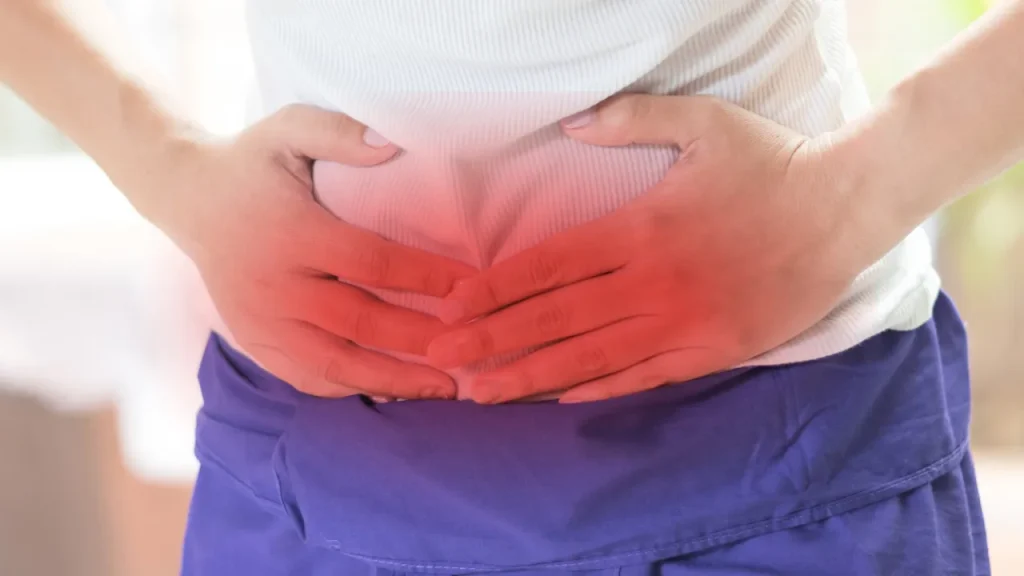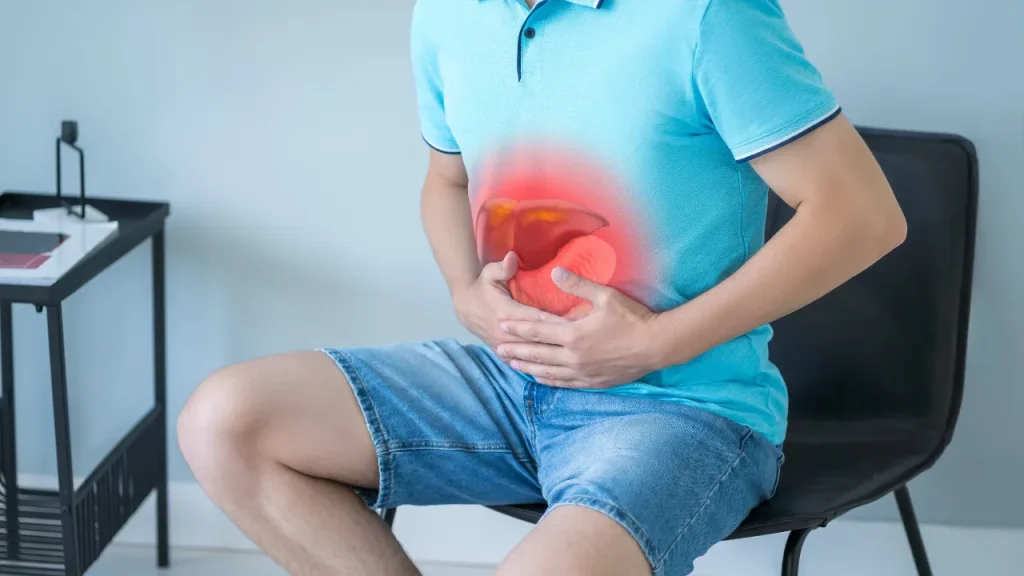Hernias occur when an organ pushes through a weak spot in the surrounding muscle or tissue. This condition affects millions in India each year. Men face higher risks due to strenuous work like farming or lifting heavy loads. Women often develop hernias during pregnancy or after childbirth. At our medical organisation, we treat many cases across cities such as Delhi and Mumbai. Hernia pain signals the problem. It varies by type and location. We explain where the pain occurs and what it feels like. This knowledge helps patients seek timely care. Early treatment prevents complications like strangulation, where blood flow cuts off to the trapped tissue.
Understanding Hernias
Hernias form in areas with muscle weakness. Common types include inguinal, hiatal, umbilical, and incisional. In India, inguinal hernias account for most cases. Studies show that about 15% of people with abdominal swellings have hernias needing repair. Genetic factors play a role. Indians often have less muscle mass than other groups. This makes them more prone to hernias.
Lifestyle adds to the risk. Heavy lifting in jobs like construction or agriculture strains muscles. A chronic cough from smoking or pollution weakens the abdominal wall. Constipation, common with low-fibre diets, increases pressure during bowel movements. Obesity and diabetes, rising in India, also contribute. Congenital hernias appear at birth, especially in low-birth-weight babies.
Hernias do not always cause pain at first. Some show as a bulge without discomfort. Pain starts when the hernia grows or gets irritated. It worsens with activities like coughing, bending, or lifting.
Common Types of Hernias and Their Pain Locations
Different hernias cause pain in specific body areas. We describe the main types below. Each has unique traits based on where the weakness occurs.

Inguinal Hernia Pain
Inguinal hernias happen in the groin area. They form when intestine or fat pushes through the inguinal canal. This canal runs from the abdomen to the pubic bone. Men experience this more often, as the canal holds structures leading to the testicles.
Pain is located in the groin. You notice it on one side of the pubic bone. It may spread to the lower abdomen or inner thigh. In men, it sometimes reaches the scrotum, causing swelling there. For women, it stays in the groin but feels like pelvic discomfort.
The pain feels like a burning or aching sensation. A heavy or dragging feeling occurs in the groin. It intensifies during bending, coughing, or lifting. Some describe it as pressure or weakness in the area. In our Indian patients, farmers report sharp twinges while carrying loads. Office workers in cities like Bangalore feel a dull ache after long sits.
If the hernia incarcerates, meaning it traps tissue, pain turns sudden and severe. The area becomes tender. This emergency requires immediate care.
Hiatal Hernia Pain
Hiatal hernias involve the stomach pushing through the diaphragm into the chest. The diaphragm separates the chest from the abdomen. This type affects older adults and those with acid reflux issues.
Pain is located in the upper abdomen or chest. It mimics heartburn or chest tightness. Some feel it under the breastbone or in the middle back. In India, where spicy foods like curries prevail, this pain often flares after meals.
The pain feels like burning or pressure in the chest. Acid reflux causes a sour taste and discomfort that rises to the throat. Swallowing turns difficult. Shortness of breath happens if the hernia presses on the lungs. Patients describe it as a full or bloated sensation. It worsens when lying down or bending forward.
Unlike other hernias, hiatal ones may not show a bulge. Pain comes from stomach acid irritating the oesophagus.
Umbilical Hernia Pain
Umbilical hernias occur near the navel. The intestine bulges through the abdominal wall at the belly button. Babies and pregnant women see this often. Adults develop it from obesity or heavy lifting.
Pain is located around the navel. It centers in the middle abdomen, between the chest and hips. The area feels tender to the touch.
The pain feels like a dull ache or pressure. It sharpens during coughing or straining. Some report a pulling sensation. In severe cases, it causes nausea if the intestine twists. Indian mothers after multiple pregnancies describe soreness that eases with rest.
Incisional Hernia Pain

Incisional hernias form at sites of previous surgery. Scar tissue weakens, allowing tissue to protrude.
Pain is located along the scar, often in the abdomen. It spreads to nearby areas, such as the sides or back. The pain feels like soreness or pulling at the scar. It worsens with movement or lifting. Some feel a burning stab. Patients in India with past C-sections or appendectomies report this.
Other Types
Epigastric hernias cause pain above the navel, in the upper abdomen. It feels like a sharp poke. Femoral hernias, rarer in India, cause pain in the upper thigh or groin. Referred pain happens. Hernias press nerves, causing back or leg discomfort. This confuses the diagnosis.
What Hernia Pain Feels Like in Detail
Hernia pain ranges from mild to severe. It often starts subtly and builds. Common descriptions include:
A dull ache that persists. This happens in the early stages. It feels like muscle strain after exercise. Pressure or heaviness. The area seems full or weighted down. Lifting makes it drag. Burning or stinging. This occurs when tissue irritates nerves. It resembles a mild burn.Sharp or stabbing pain. Activities trigger it. Coughing or sneezing sends a jolt.Tingling or numbness. Rare, but happens if nerves compress.
Pain changes with position. Standing worsens it. Lying down relieves some types.In India, patients link pain to daily tasks. Rickshaw pullers feel groin pulls. Homemakers notice navel aches while cooking.
Factors That Worsen Hernia Pain
Certain actions increase pain. Straining during bowel movements, common with Indian diets low in fibre, adds pressure. Heavy lifting in markets or farms triggers groin discomfort.
Coughing from respiratory issues, like in polluted cities, strains hernias. Obesity presses on weak spots. Pain lasts from minutes to hours. Chronic cases cause ongoing discomfort.
When Hernia Pain Signals an Emergency
Some pain means danger. Sudden, intense pain with vomiting signals strangulation. The bulge turns red or dark. Fever joins in.
Inability to pass gas or stools indicates blockage. Seek help fast. In India, rural areas delay care, raising risks.We urge patients to visit if pain persists or worsens. Early checks prevent emergencies.
Diagnosis and Treatment Options
Doctors diagnose through exams. They feel for bulges while you cough. Ultrasounds confirm.
Treatment starts with a watchful wait for small hernias. Surgery repairs larger ones. Laparoscopic methods use small cuts for quick recovery.
Prevention Tips for Indians
Prevent hernias with lifestyle changes. Maintain a healthy weight through walks or yoga. Eat fibre-rich foods like dal and vegetables.Avoid smoking. Treat coughs promptly. Lift properly by bending knees.
Final Thoughts
Hernia pain is located in the groin, abdomen, or chest based on the type. It feels like aches, pressure, or burns. Recognise it early for better outcomes. At our organisation, we offer expert guidance. Contact us for assessments.
